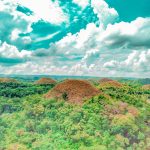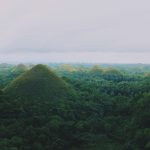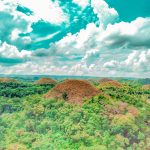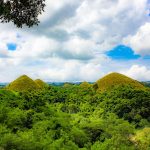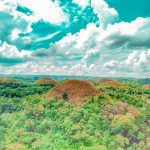Download links
How to install Rediscovering Boracay: A Paradise Reborn APK?
1. Tap the downloaded Rediscovering Boracay: A Paradise Reborn APK file.
2. Touch install.
3. Follow the steps on the screen.
Description
In April 2018, the world-renowned island of Boracay was closed to tourists for a six-month rehabilitation period, marking a significant turning point in its history. This closure was prompted by alarming environmental degradation, which had escalated due to unregulated tourism, overdevelopment, and inadequate waste management systems. The Philippine government, under President Rodrigo Duterte, declared the island a “cesspool,” highlighting the urgent need for intervention.
During this time, the pristine beaches and vibrant ecosystems that had drawn millions of visitors were at risk, prompting a reevaluation of how tourism could coexist with environmental sustainability. The rehabilitation efforts were extensive and multifaceted. Authorities focused on restoring the island’s natural beauty by implementing stricter regulations on construction and waste disposal.
Infrastructure improvements were made to enhance the island’s sewage systems, ensuring that wastewater was treated properly before being released into the environment. Additionally, the government imposed limits on the number of tourists allowed on the island at any given time, aiming to reduce overcrowding and its associated impacts. This period of closure not only allowed for physical restoration but also served as a wake-up call for stakeholders in the tourism industry to rethink their practices and prioritize sustainability.
Key Takeaways
- Boracay’s closure in 2018 led to a much-needed rehabilitation of the island, addressing environmental and infrastructure issues.
- Sustainable tourism efforts in Boracay aim to preserve the island’s natural beauty while allowing for responsible development.
- Beyond the famous White Beach, Boracay offers hidden gems such as Puka Shell Beach and Mount Luho for unique experiences.
- Visitors can savor local flavors in Boracay through a variety of culinary delights, from fresh seafood to traditional Filipino dishes.
- Supporting local communities in Boracay through responsible tourism and engagement can help sustain their livelihoods and preserve their culture.
- When planning a Boracay getaway, consider staying in eco-friendly accommodations, participating in beach clean-ups, and exploring off-the-beaten-path attractions.
Sustainable Tourism: Balancing Preservation and Development
Sustainable tourism has emerged as a guiding principle in Boracay’s post-rehabilitation era, emphasizing the need to balance economic growth with environmental preservation. The island’s recovery has sparked discussions about how tourism can be managed in a way that protects its natural resources while still providing economic benefits to local communities. This approach involves engaging various stakeholders, including government agencies, local businesses, and residents, to create a shared vision for Boracay’s future.
One of the key strategies for promoting sustainable tourism in Boracay is the implementation of eco-friendly practices among businesses. Hotels and resorts are increasingly adopting green technologies, such as solar energy and water conservation systems, to minimize their environmental footprint. Additionally, many establishments are now sourcing food locally, which not only supports local farmers but also reduces transportation emissions.
By fostering a culture of sustainability, Boracay aims to attract conscientious travelers who prioritize environmental responsibility in their travel choices.
New Attractions and Activities: Exploring Boracay’s Hidden Gems

While Boracay is famous for its stunning White Beach, the island offers a plethora of hidden gems waiting to be discovered. The rehabilitation period has allowed for the development of new attractions that showcase the island’s natural beauty and cultural heritage. For instance, the less-visited Puka Shell Beach has gained popularity for its serene atmosphere and unique shell-strewn shoreline, providing a tranquil alternative to the bustling main beaches.
Adventure seekers can explore Boracay’s vibrant marine life through snorkeling and diving excursions at sites like Crocodile Island and Yapak Beach. These locations are teeming with colorful coral reefs and diverse aquatic species, making them ideal for underwater exploration. Moreover, eco-tours have become increasingly popular, allowing visitors to engage with the island’s ecosystems while learning about conservation efforts.
Guided hikes through lush trails lead to breathtaking viewpoints and hidden waterfalls, offering a chance to experience Boracay’s natural wonders away from the crowds.
Culinary Delights: A Taste of Boracay’s Local Flavors
| Local Flavor | Popular Dish | Ingredients |
|---|---|---|
| Lechon | Roasted Pig | Pork, garlic, bay leaves, lemongrass, and spices |
| Adobo | Adobo Chicken | Chicken, soy sauce, vinegar, garlic, and pepper |
| Kare-Kare | Oxtail Stew | Oxtail, peanut sauce, eggplant, string beans, and banana blossom |
| Chori Burger | Chorizo Burger | Chorizo patty, special sauce, and vegetables |
Boracay’s culinary scene has flourished in recent years, reflecting the island’s rich cultural tapestry and diverse influences. Local flavors take center stage as chefs experiment with traditional Filipino dishes while incorporating fresh seafood and locally sourced ingredients. The island is home to a variety of dining options, from casual beachside eateries to upscale restaurants that offer gourmet experiences.
One must-try dish is “sinigang,” a sour soup typically made with pork or shrimp and flavored with tamarind. This dish embodies the essence of Filipino cuisine, showcasing bold flavors that are both comforting and refreshing. Additionally, seafood lovers can indulge in “grilled pusit” (grilled squid) or “kinilaw” (Filipino ceviche), which highlight the freshness of Boracay’s catch of the day.
Food festivals and night markets have also become popular attractions, allowing visitors to sample an array of local delicacies while immersing themselves in the vibrant atmosphere of Boracay’s culinary landscape.
Community Engagement: Supporting the Locals and their Livelihood
The rehabilitation of Boracay has underscored the importance of community engagement in sustainable tourism practices. Local residents play a crucial role in preserving the island’s culture and environment while benefiting from tourism-related opportunities. Initiatives aimed at empowering local communities have gained traction, fostering a sense of ownership among residents regarding their natural resources.
One notable program is the establishment of cooperatives that support local artisans and craftspeople. These cooperatives provide platforms for locals to showcase their handmade products, such as woven goods and traditional handicrafts, allowing them to earn a sustainable income while preserving their cultural heritage. Additionally, community-led tours offer visitors authentic experiences that highlight Boracay’s history and traditions, creating meaningful connections between tourists and locals.
Planning Your Next Boracay Getaway: Tips and Recommendations

For those considering a trip to Boracay, careful planning can enhance the overall experience while ensuring that your visit aligns with sustainable tourism practices. First and foremost, travelers should consider visiting during the shoulder seasons—late October to early December or mid-January to March—when crowds are thinner, and accommodations may be more affordable. This timing allows for a more relaxed exploration of the island’s attractions without the overwhelming influx of tourists.
When selecting accommodations, opt for eco-friendly resorts or hotels that prioritize sustainability in their operations. Many establishments now offer green certifications or participate in local conservation efforts, ensuring that your stay contributes positively to the environment. Additionally, consider engaging in community-based activities such as cooking classes or guided nature walks led by local residents.
These experiences not only enrich your understanding of Boracay but also support local livelihoods. In conclusion, Boracay’s journey from environmental crisis to a model of sustainable tourism is a testament to the resilience of both its natural beauty and its community. By embracing responsible travel practices and supporting local initiatives, visitors can enjoy all that this enchanting island has to offer while contributing to its preservation for future generations.
If you’re planning a trip to Boracay, you may want to check out this article on Super Mario Run 3.0.9 for some entertainment during your travels. This popular game can keep you entertained while you relax on the beautiful beaches of Boracay. Don’t forget to also download WhatsApp Messenger 1.
And if you need to get some work done while on vacation, consider downloading the latest version of Microsoft Word with Microsoft Word APK v16.0.16924.20064. Enjoy your trip to Boracay!
FAQs
What is Boracay?
Boracay is a small island in the Philippines known for its beautiful white sand beaches and clear blue waters. It is a popular tourist destination for its stunning natural beauty and vibrant nightlife.
What are the popular activities in Boracay?
Some popular activities in Boracay include swimming, snorkeling, scuba diving, kite surfing, and island hopping. The island also offers a variety of restaurants, bars, and shops for visitors to enjoy.
When is the best time to visit Boracay?
The best time to visit Boracay is during the dry season, which runs from November to April. This is when the weather is most pleasant and the waters are calm, making it ideal for beach activities.
Is Boracay family-friendly?
Yes, Boracay is a family-friendly destination with plenty of activities and accommodations suitable for families. The island offers a range of options for visitors of all ages, including kid-friendly beaches and resorts.
Are there any environmental regulations in Boracay?
Yes, in 2018, the Philippine government closed Boracay for six months to undertake major environmental rehabilitation efforts. Since then, the island has implemented strict regulations to protect its natural resources, including limits on the number of visitors and activities allowed on the island.

